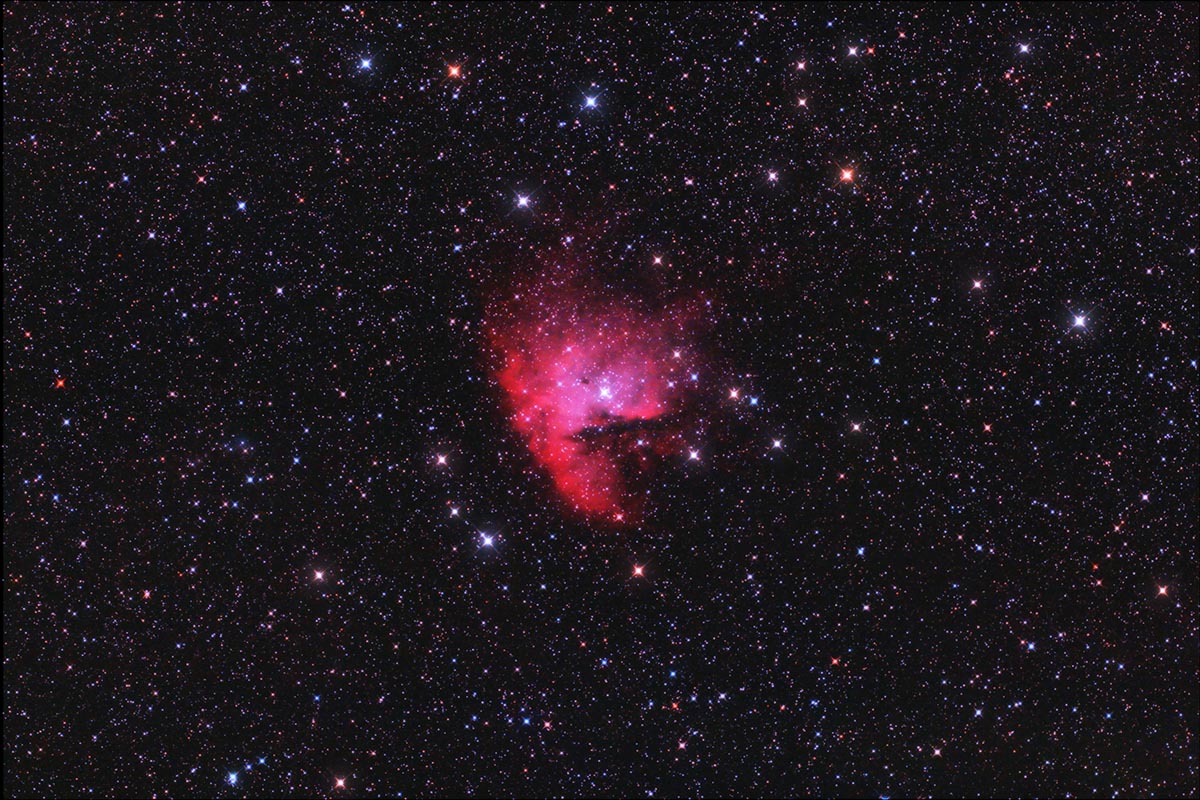ARCHIVE 2008INTRODUCTIONImaging from the worst place on Earth? Possibly! Welcome to my image blog from Lancashire, UK. Living in Lancashire does make imaging a challenge. Our incessant damp cloudy weather is legendary and coupled with light pollution probably as bright as can be found anywhere (I am 15 miles NW of the centre of Manchester) makes for testing times! Add to that flight path one with constant aeroplanes, which is why it has been suggested as possibly the worst place on Earth for imaging. Now the good news. With modern light pollution filters we can still produce excellent results - at least when the clouds clear - but of course we cannot match dark sites - I avoid looking at images from such sites as they are very depressing and un-representative of what the rest of us have to suffer! So if you too live in cloudy suburbia then I hope the following images offer some encouragement. I often shoot the luminance and the colour simultaneously - there are not enough clear spells to alow the luxury of shooting separately. Having two telescopes and two cameras is obviously essential for this - as is having a dome slot wide enough for both to have a clear line of sight. The luminance is usually taken with the RCOS + Apogee Alta and the colour Takahashi + Canon 40D. Despite their disparate focal lengths this works reasonably well as the Canon has 5 micron pixels (plate scale 2 arcsecs/pixel) and the Apogee 18 micron ones when binned 2x2 (plate scale 1.3 arcsecs/pixel). I find binning essential to maximise signal and improve the signal-to-noise ratio. The images are all taken from my back garden and appear in order of me processing them - we have plenty of cloudy nights for that. I use a combination of IRIS and Maxim for processing with final tweaks in Photoshop CS2. To get rid of the light pollution takes much trial and error. IRIS scores here with several options but processing often comprises many nights work - certainly always longer than the actual taking. The exception are images taken with an h-alpha filter which is a superb light pollution filter. It also permits imaging with strong Moonlight present - isn't it funny how it always seems to be clear at full Moon! |
DECEMBER 31st, 2008The Chinese Dragon in the Heart Nebula (IC1805) Well it looks like a Chinese Dragon to me. UPDATE: My version of an APOD - see http://apod.nasa.gov/apod/ap121109.html Converted to approximate that colour scheme which is not really to my taste! Image details:
. |
| Heart Nebula
|
DECEMBER 6th, 2008Crab Nebula, M1 The most famous of supernova remnants. The pulsar is the lower of the two central stars. Image details:
. |
| Crab Nebula
|
DECEMBER 11th, 2008Galaxy NGC 1055 and Asteroid Herluga Interesting edge-on galaxy that had a visitor on the night I was imaging. Unfortunately it wasn't a new discovery. Image details:
|
NGC 1055 |
NOVEMBER 18th, 2008Spiral Galaxy, IC342 Located in Camelopardalis, this one of the biggest galaxies in the northern sky. However, its position close to the plane of the Milky Way means it is heavily obscured. Image details:
|
IC 342 |
OCTOBER 28th, 2008Seyfert Galaxy, M77 M77 is located about 50 million light-years away in the constellation Cetus and is the brightest Seyfert galaxy. These galaxies are relatives of the quasars and have Active Galactic Nuclei (AGN) powered by black holes. Image details:
|
M77 |
OCTOBER 27th, 2008Pacman Nebula, NGC281 NGC 281 is an H II region in the constellation of Cassiopeia and part of the Perseus Spiral Arm. It includes the open cluster IC 1590, the multiple star HD 5005, and several Bok globules. Colloquially, NGC 281 is also known as the Pacman Nebula for its resemblance to the old video game - ref Wiki Image details:
|
 |
NGC281 |
OCTOBER 24th, 2008Irregular Galaxy, IC10 Located in Cassiopeia. Heavily obscured irregular galaxy. Image details:
|
IC10 |
SEPTEMBER 7th, 2008Spiral Galaxy, NGC6946 Located in Cygnus. this bright but obscured galaxy is famous for the high number of supernovae it has produced. Worth keeping an eye on it! Image details:
|
NGC6946 |
SEPTEMBER 1st, 2008Dark Nebula Barnard's E, B142 & B143 Located in Aquila, this dark nebula is estimated to be 2000 light years away. Image details:
|
Barnard's E |
MAY 13th, 2008Globular Cluster, M13 Located in Hercules, this cluster is the largest in the northern hemisphere. Image details:
|
M13 |
APRIL 13th, 2008Barred Spiral Galaxy, M109 Possibly the best barred spiral in the northern hemisphere. Image details:
|
M109 |
|
Please remember these images are copyright David Ratledge. Contact me before any use is made of them. |